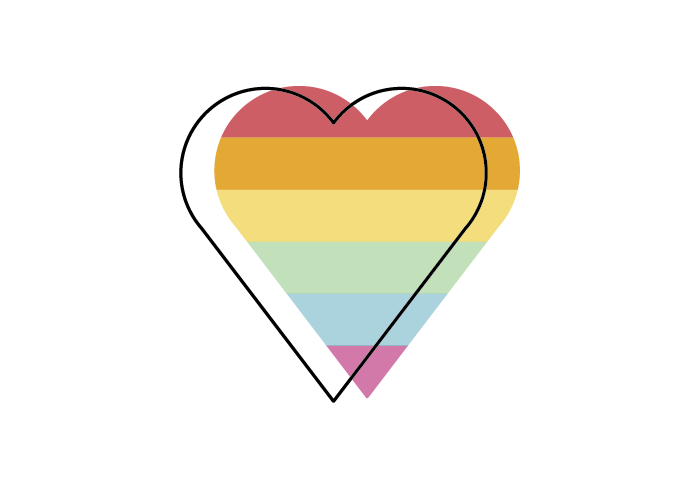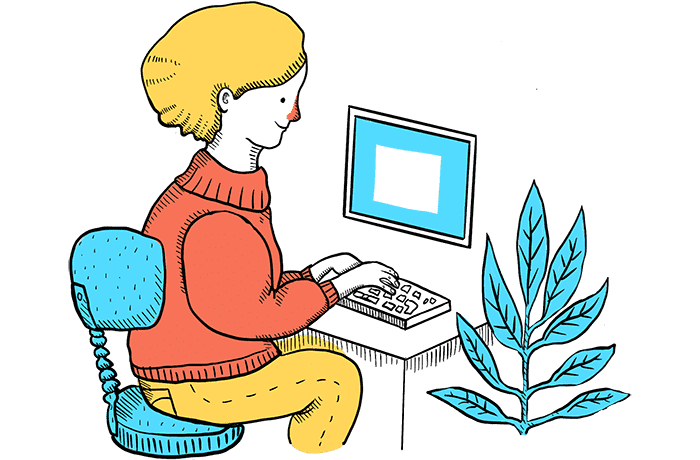Sex education – adolescent level

The toolbox contains icebreakers, videos, projects, educational materials, and much more for use in sex education at the adolescent level.
Books and teaching materials
Here you can find books, instructional materials, pamphlets, teaching ideas, coloring books, comics, and projects for use in sex education at the adolescent level.

Videos and websites
Here is a toolkit containing videos, websites, TV shows, animations, and podcasts that can be used for sex education at the adolescent level.

Various types of education and teaching ideas
Why kissing is good - here are a few points about kissing and why it's beneficial.
Talking to children about pornography - here are points that are helpful to read before discussing pornography with adolescents.
Diverse genitalia - Educational material about different genitalia and intersex that can be colored.
Internal reproductive organs - Exercise where students label internal reproductive organs with their correct names.
Pornography and 'sexting' – the prevalence of sexual image sharing among children - Video. In this presentation, Margrét Lilja, specialist at Research and Analysis, and Kolbrún Hrund, former project manager of the Gender Equality Academy of Reykjavík, examine digital sexual violence and the prevalence of sexual image sharing among children.
The difference between sex and pornography. Here is a teaching idea aimed at helping students understand the difference between sex and pornography.
Anonymous questions are pair and/or group projects where students help each other find reliable answers to common questions that arise in sex education.
Debating agreement/disagreement. Here is a teaching concept aimed at getting students to consider various issues (e.g., pubic hair, nude photo sharing, violence, etc.), take a position on them, and be able to justify their views. This also provides the opportunity to change opinions and realize that there may be more than one side to any issue.
The "Consent Sandwich" is a helpful way to look at the important parts of consent when engaging in sexual activity.
The menstrual cycle is a coloring book created by the Reykjavík Gender Equality Academy. The coloring book is a fun way to learn about the menstrual cycle.
Ten reasons to avoid OnlyFans - here, former sex worker Harmony (Dust) Grillo provides ten reasons why she believes creating an OnlyFans account is a bad idea. She writes particularly to those who identify as girls/women, but the article is intended for everyone
Checklists
Am I ready to start having sex? - this checklist is well suited for young people who are considering when they are ready to start having sex with others. The checklist is intended for young adults to review and answer for themselves, not to be submitted or have the answers read aloud.
It is recommended to offer a variety of teaching methods
Here you'll find an educational package for adolescent level students that was prepared for Week6 2025, when the year's theme focused on the body and genitals. You'll find various teaching ideas that can be adapted to diverse discussion topics.
- Group work/presentations
- Use post-it notes, for instance, in brainstorming sessions.
- Slide presentations
- Slido.com or menti.com - allows for the submission of anonymous questions, word clouds, and more.
- Use magazines, movies, shows, and social media - discuss, for example, media pressure to always be sexy, ready for everything, and that everything is so great, unrealistic, and even harmful.
- Drawings - have students draw, embroider, craft or mold bodies and genitalia from clay. Emphasize that the appearance and function of bodies and genitals are very diverse.
- Have an idea box / question box
- Use a word -/ concept jar, clarify basic terms and words well. Students can draw from a jar. Examples of words could be: intercourse, foreplay, caresses, masturbation, intimacy. Afterward, they can seek out information, discuss together, and then explain to others or write it down and hang it on the wall.
- Allow students to create brochures, websites, videos or podcasts.
- Debates - select a topic and exchange views on it, for instance, about pubic hair, pornography consumption, or condom use.
- Conduct interviews, for example with parents or grandparents, about their first love or heartbreak, about puberty, and about the sex education they received back in their day.
- Engage in games
- 'Café conversations' – taboo sessions. Here, anonymous questions can be used.
- Work with dilemma scenarios
- Introduce various projects and campaigns, such as #Week6 and Sick Love.
- Present well resources such as 112.is, Barnaheilli suggestion line, the help phone 1717, Love Sick webchat, gynecologists of the Sexual Health Clinic, emergency reception for victims of sexual violence in Fossvogur, and Stígamót.
What do you want to explore next?
- Adolescent gender education Here is a toolbox with gender education materials for the adolescent level of primary school
- LGBT+ education for the adolescent level Here is a toolbox with LGBT+ education materials for the adolescent level of primary school
- But I Was Alone! Boys' Self-Image and the System Videos from the conference But I Was Alone! Boys' Self-Image and the System.
- Are You Normal? projects where adolescents have the opportunity to contemplate what it means to be normal.